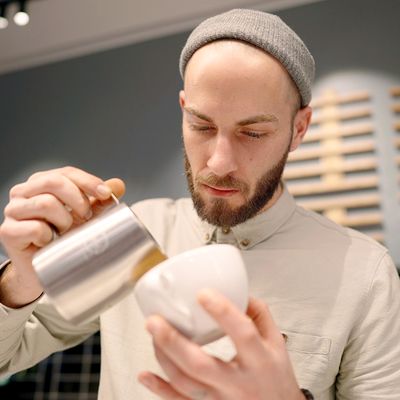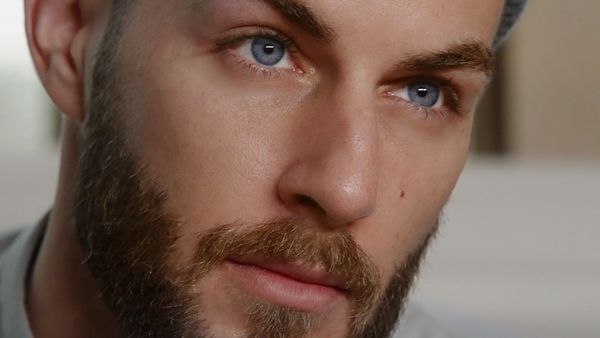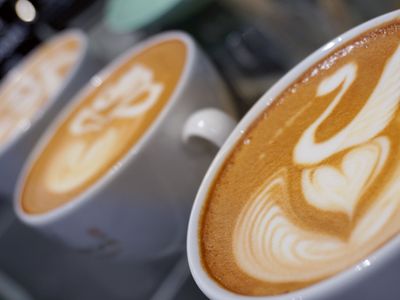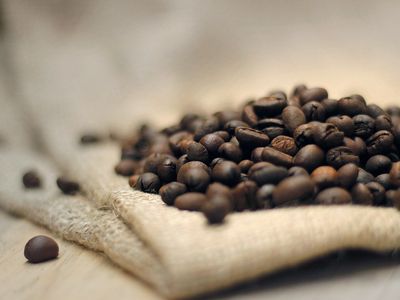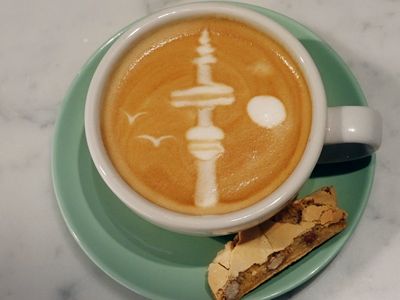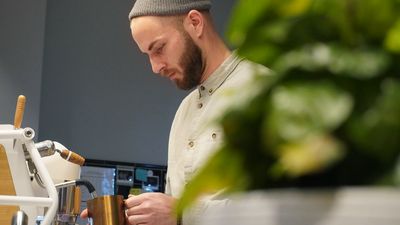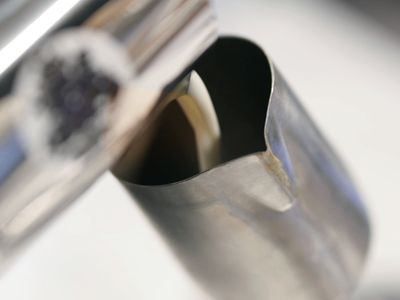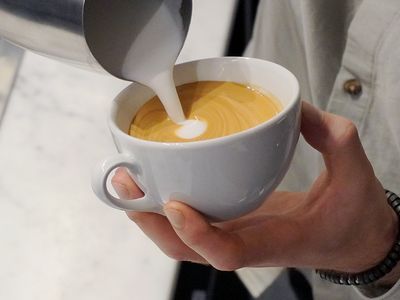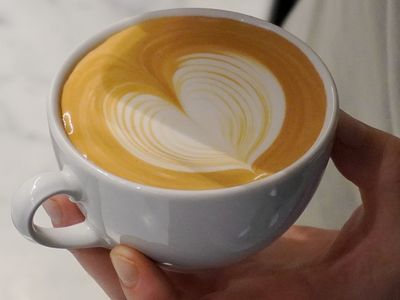‘As a child, I drew a lot, painted and did anything where I could let my creativity run free’, says Yuri. And he still hasn’t stopped. Since a colleague showed him how to draw a heart in a cup of coffee ten years ago, he has concentrated his talent on latte art.
The port is the heart of Hamburg. For hundreds of years, it has influenced the life of the city and ensured that Hamburg has kept its finger on the pulse as the gateway to the world. This led to one of the first coffee houses in Germany being established here and the port and Speicherstadt warehouse district to become the most important trans-shipment centre in Europe. You can still feel this influence in the many small roasteries and cafes, and Hamburg is where Yuri found his passion for coffee too. ‘When I got into this ten years ago, I was so inspired by it. Back then, everything was very new and, quite simply, I had a lot of fun with all parts of coffee. From the roasting of coffee beans, over espresso and black coffee to Latte Art.
Yuri’s view of coffee, art and culture.
What do you like about being a barista?
I never wanted to work in gastronomy, but coffee brought me there and now I can bring together my creativity and my job. What could be better? Furthermore, I like the fact that I can meet various people from all walks of life in the cafe – almost everyone likes drinking coffee in all kind of variations. Coffee and its preparation are as versatile as the people. Black Coffee is different to an espresso or a mocha I like that.
What do you do when you run out of ideas?
I rarely run out of ideas, but when I do get stuck, I listen to a lot of music, in particular film soundtracks or classical music. The best ideas are actually born when I am relaxed and give my thoughts free rein, but am completely focused on something. Preparing coffee and drawing in the milk foam can be very meditative and inspiring. Ideas simply materialise, most of the time. Travel also helps. I gather tricks and ideas for images in other cities, such as Rome.
What differentiates the coffee culture in Hamburg from the coffee culture in Italy?
Italy is a bit more traditional. Dark roasts with nutty, chocolatey notes dominate and if they say coffee they talk about espresso.
I get the impression that Hamburg is more innovative. Perhaps this is because I am part of the scene, but things are changing. There are many more speciality coffee roasteries that offer lighter roasts. Fruity, floral notes prevail there. There is simply a much broader range of flavours and different facets thereof which can come to the fore, instead of having a rather monotonous roasting profile as has been the case in the past.
What makes a good coffee?
Good coffee depends on the bean itself. The machine is completely incidental. The best coffee machine cannot make a coffee better, but you can really mess up a good bean by preparing it badly. Look for a high-quality bean that has been processed well. Of course you can have a really good coffee from a fully automated coffee machine. The Siemens coffee machine has a barista mode where you can adjust all the settings. That’s perfect.
Which coffee is your favourite?
I am a big fan of African beans. They are very complex and stand out for me. As far as preparation is concerned, I am a purist: I like pour-over coffee, and I drink my coffee black. I am also partial to espresso when out and about.
Yuri’s tips for a really good coffee and the perfect milk foam.
For Yuri, good milk foam starts with the espresso. It should have a good crema. Robusta coffee usually has this quality. Arabica beans have less crema and the high acidity level affects the milk and influences the foam. Select a normal roast, so that you have a good contrast with the milk foam.
Want to create good milk foam? Here’s a few tips.
It doesn’t matter whether you use cow’s milk or a plant-based alternative. The deciding factor is having the highest possible protein content. This will determine the quality of the foam and how long it lasts.
Cow’s milk is the easiest to pour, but oat milk and pea milk also work very well. Soy milk is a bit more difficult to pour and work with, particularly for complicated designs.
The fat content of the milk is not important. However, fat is a flavour enhancer. If it is important to have a richer taste, use milk with a high fat content.
So, let’s get down to it: here’s how to make the perfect milk foam.
There are two stages in the creation of milk foam. The stretching stage, in which air is introduced to the surface of the milk and the mixing stage, where the milk is circulated.
In the stretching stage, you keep the steam wand on the surface of the milk and at the edge of the jug Make sure that this stretching stage does not last longer than a third of the total foaming time.
The remaining two-thirds of the time should be spent mixing the milk so that it circulates in the jug and creates a vortex. This will make the bubbles even smaller. To do this, the steam wand needs to be entirely immersed in the milk.
The first steps to become a latte artist.
There are three basic shapes that you can use to pour many more designs. Let’s begin with the simplest basic shape – the heart.

